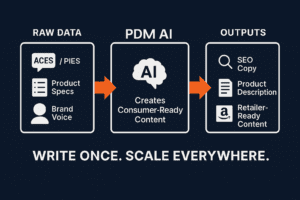Reducing returns is a major concern for aftermarket brands that want to build strong revenue streams and, more importantly, create exceptional customer experiences.
Returns in the e-commerce sector often stem from a few common issues. A primary reason is the discrepancy between customer expectations and the actual product received, which can be due to misleading or inadequate product descriptions and poor-quality images. In the world of automotive products, ensuring the right product is being sold for the customer’s specific vehicle and providing accurate specifications is instrumental in reducing returns.
Additionally, products arriving damaged or defective due to subpar packaging or handling issues during shipping prompt customers to initiate returns. Furthermore, some returns result from buyer’s remorse, where customers change their minds post-purchase, often influenced by factors like price, need, or the discovery of a better alternative.
Brands can never eliminate returns, but here are seven effective strategies to minimize returns.
1. Detailed Product Descriptions
For aftermarket businesses, compelling and informative product descriptions are not just text, but a powerful tool to bridge the gap between online shopping and the physical showroom experience.
They provide customers with crucial details, helping them make informed decisions about complex products like automotive parts and accessories. Well-crafted descriptions accurately convey features, specifications, and compatibility and can boost buyer confidence, minimizing uncertainty and the likelihood of returns. Enriched content with relevant keywords enhances SEO, improving search visibility and attracting more potential customers.
Investing in high-quality automotive product descriptions is a strategic move that can increase conversion rates, customer satisfaction, and a strong, trustworthy brand image.

2. High-Quality Images and Videos
In an industry where precision and detail are paramount, clear and detailed images can effectively showcase the intricacy and quality of auto parts, instilling confidence in potential buyers.
High-resolution images that allow zooming and viewing from multiple angles give customers a near-tactile online shopping experience, closely mimicking the in-store feel. This visual clarity reduces ambiguity, helping customers understand exactly what they’re purchasing, which is particularly crucial for components where compatibility and specifications are key. Moreover, professional images enhance the perceived value of products and bolster your brand’s credibility, setting you apart in a competitive marketplace.
Investing in high-quality images is not just about aesthetics; it’s a strategic decision that can significantly reduce returns, increase conversions, and elevate the overall customer experience.
3. Correct Vehicle Fitment Data
Accurate fitment data is the cornerstone for customers making informed purchases, particularly in an industry where the accuracy of parts and component information is non-negotiable.
When customers order parts that will fit their specific vehicle make, model, and year, the likelihood of returns due to incompatibility dramatically decreases. Product accuracy enhances the customer’s shopping experience and solidifies your reputation as a reliable and customer-centric business. Moreover, precise fitment data streamlines the purchasing process, minimizes costly return-related logistics, and helps maintain a positive bottom line. Product Information Management (PIM) platforms, like those offered by PDM Automotive, provide a bridge that connects important ACES data at the manufacturer with the online listing to ensure accuracy.
This strategic approach to building lasting customer relationships gives aftermarket companies a competitive edge in the ultra-competitive automotive market.
4. Customer Reviews and Q&A Sections
Reviews offer real-world insights into the performance, quality, and compatibility of automotive parts directly from those who have already made purchases.
This authentic feedback helps potential buyers set realistic expectations, make more informed decisions, and choose the right components for their needs. Positive reviews can reassure customers about their purchase decisions, while even negative reviews, when addressed constructively, can demonstrate your commitment to customer service and continuous improvement. By actively encouraging and showcasing customer reviews, businesses enhance their credibility and build a valuable knowledge base.
This repository of user experiences can guide customers more accurately than any description, minimizing the likelihood of mismatches and subsequent returns.
5. Clear Return and Shipping Policies
Well-defined and transparent return and shipping policies are not just about providing information; they are a strategic tool for reducing returns, fostering customer trust, and building a reputation for reliability and customer-centric service in the competitive automotive components market.
Transparent policies give customers a solid understanding of the terms and conditions associated with their purchases, setting the right expectations from the outset.
When customers are well-informed about the return process, time frames, restocking fees, and the condition in which items can be returned, it minimizes uncertainty and potential dissatisfaction. Clear shipping policies that detail expected delivery times, shipping methods, and costs can prevent misunderstandings that often lead to returns.
By communicating these policies clearly and prominently, businesses can deter impulsive or uninformed purchases, which are more prone to returns.
6. Robust Packaging
Components often involve delicate parts susceptible to damage from shocks, vibrations, or mishandling.
High-quality, durable packaging ensures that items reach customers in impeccable condition, reflecting the care and value your business places on its products and customer satisfaction. When customers receive well-protected and professionally packaged items, it not only reinforces the product’s perceived quality but also minimizes the chances of returns due to damage. Furthermore, thoughtful packaging can enhance the unboxing experience, adding to customer delight and reinforcing brand loyalty.
Investing in robust packaging solutions projects a strong brand image, reduces the costs and logistical complexities associated with returns, and ultimately contributes to a positive and memorable customer experience.
7. Proactive Customer Service
In an industry where precision and reliability are paramount, proactive and responsive customer service can significantly diminish the likelihood of returns.
By offering expert guidance, answering queries promptly, and addressing concerns before and after purchase, businesses can ensure that customers make informed decisions, reducing the chances of mismatched or unsatisfactory products. When issues arise, a customer service team that is empathetic, efficient, and empowered to resolve problems can turn potentially negative experiences into positive ones, often preventing returns.
Excellent customer service builds trust and rapport, encouraging customers to seek assistance selecting the right components rather than resorting to returns.
Increase sales and reduce returns with PDM Automotive
Crafting a winning content management strategy is at the core of what makes PDM Automotive an industry leader.
Our PIM platform provides automotive aftermarket businesses with everything they need to reduce returns and create raving fans that come back again and again. From managing ACES and PIES data to feeding product content into compelling product listings that convert, PDM Automotive is dedicated to helping automotive aftermarket businesses maximize their omnichannel strategy.
Contact us for a demo to learn how PDM Automotive can help your business grow with better content management.



